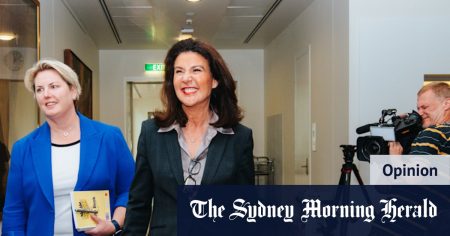This legal dispute centers around a civil proceeding between Ryan Meuleman and the law firm Slater and Gordon, stemming from a 2013 car accident involving Catherine Andrews, wife of Victorian Premier Daniel Andrews. While the Andrews couple are not directly involved in the lawsuit, the case has garnered significant public attention due to their involvement in the underlying incident. Meuleman, then a 15-year-old cyclist, was struck by a vehicle driven by Catherine Andrews, with Daniel Andrews and their three children also present in the car. The ensuing legal wrangling between Meuleman and his legal representation, Slater and Gordon, has now brought into question the handling of certain documents related to the accident, including the emergency call made by Daniel Andrews in the aftermath.
The heart of the current legal dispute lies in Slater and Gordon’s allegations concerning the potential misuse of documents by Meuleman’s current lawyer, George Catlin. During a pre-mediation hearing, Slater and Gordon raised concerns with the court, prompting a sharp response from Catlin. He argued that the allegations were a thinly veiled attempt to intimidate his client, who is currently receiving government assistance, and characterized them as “dog-whistling” accusations of contempt of court. Catlin challenged Slater and Gordon to formally pursue contempt charges if they believed such an offense had occurred. He further emphasized the public interest surrounding the case and maintained that his client had not breached any agreements concerning the documentation, including the recording of the Triple-0 call made by Daniel Andrews, which he stated had been shared with three expert witnesses.
The judicial registrar presiding over the hearing declined to make a ruling on the document handling issue and instead directed the parties to proceed with mediation. This decision underscores the preliminary nature of the dispute and the court’s preference for an amicable resolution. However, the exchange highlights the underlying tension between the parties and the potential for further legal skirmishes as the case progresses. The public nature of the dispute, coupled with the involvement of high-profile political figures, adds another layer of complexity to the proceedings.
The 2013 accident itself remains a point of contention. While no charges were filed against Catherine Andrews at the time, the police response to the incident drew criticism and subsequent scrutiny. The failure of officers to administer a breathalyzer test, a breach of standard operating procedures, led to internal warnings but ultimately no formal disciplinary action. This lapse in protocol, combined with Victoria Police’s subsequent refusal to release accident-related documents under freedom-of-information requests, prompted the Independent Broad-based Anti-Corruption Commission (IBAC) to review the police handling of the matter. The IBAC’s involvement further underscores the controversy surrounding the accident and its aftermath, contributing to the ongoing public interest in the case.
The current legal proceedings represent a complex intersection of personal injury litigation, document handling protocols, and public accountability. The allegations of document misuse raise questions about the proper handling of sensitive information in legal proceedings, while the history of the underlying accident brings issues of police conduct and transparency to the forefront. The public interest in the case, fueled by the involvement of prominent political figures, adds another layer of scrutiny to the proceedings. As the case progresses, the resolution of these issues will have implications not only for the parties involved but also for the broader legal and political landscape.
The core of the issue lies within the interplay of the original accident and the subsequent legal representation sought by Meuleman. The accident, though involving prominent figures, did not result in charges. However, the police handling of the incident, specifically the failure to administer a breathalyzer test, raised questions about due process and spurred an IBAC investigation. This background of potential procedural irregularities now forms the backdrop for the current legal dispute, as the handling of documents related to the accident, including the crucial emergency call recording, becomes a focal point of contention between Meuleman and his former legal team. The continued public interest, driven by the involvement of the Andrews family, underscores the broader implications of the case, extending beyond the personal legal dispute to encompass questions of transparency and accountability within both legal and political spheres.










